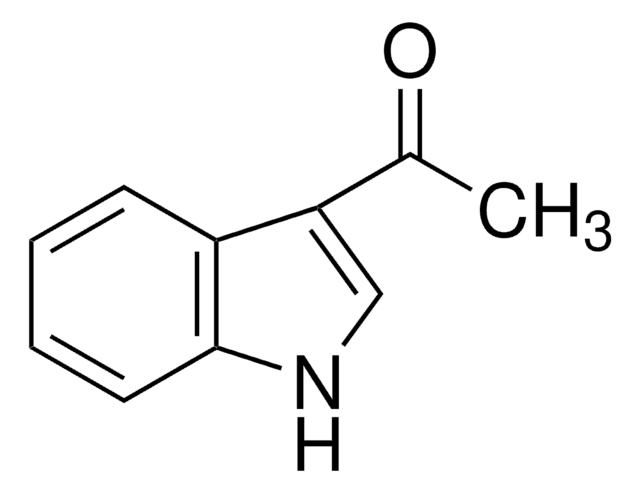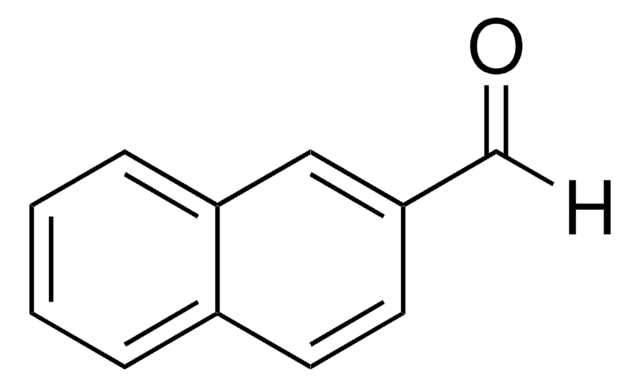347949
3-Cyanoindole
98%
Synonym(s):
3-Indolecarbonitrile, NSC 24935
Sign Into View Organizational & Contract Pricing
All Photos(1)
About This Item
Empirical Formula (Hill Notation):
C9H6N2
CAS Number:
Molecular Weight:
142.16
MDL number:
UNSPSC Code:
12352100
PubChem Substance ID:
Recommended Products
Assay
98%
mp
179-182 °C (lit.)
SMILES string
N#Cc1c[nH]c2ccccc12
InChI
1S/C9H6N2/c10-5-7-6-11-9-4-2-1-3-8(7)9/h1-4,6,11H
InChI key
CHIFTAQVXHNVRW-UHFFFAOYSA-N
General description
3-Cyanoindole undergoes regiospecific bromination to afford 6-bromo-3-cyanoindole. 3-Cyanoindole is formed during the flash vacuum thermolysis (FVT) of 3-azidoquinoline.
Application
Reactant for preparation of:
Reactant for:
- Tryptophan dioxygenase inhibitors pyridyl-ethenyl-indoles as potential anticancer immunomodulators
- Inhibitors of the C-terminal domain of RNA polymerase II with antitumor activities
- 4-substituted β-lactams
- Biologically active Indoles
- Inhibitors of glycogen synthase kinase 3β (GSK-3)
- HIV-1 integrase inhibitors
- Indole fragments as inosine monophosphate dehydrogenase (IMPDH) inhibitors
- Aziridinomitosene skeleton
- Potential antiviral agents
Reactant for:
- Intramolecular oxidative C-H coupling reactions with applications in medium-ring synthesis techniques
Signal Word
Warning
Hazard Statements
Precautionary Statements
Hazard Classifications
Acute Tox. 4 Dermal - Acute Tox. 4 Inhalation - Acute Tox. 4 Oral - Eye Irrit. 2 - Skin Irrit. 2 - STOT SE 3
Target Organs
Respiratory system
Storage Class Code
11 - Combustible Solids
WGK
WGK 3
Flash Point(F)
Not applicable
Flash Point(C)
Not applicable
Personal Protective Equipment
dust mask type N95 (US), Eyeshields, Gloves
Choose from one of the most recent versions:
Already Own This Product?
Find documentation for the products that you have recently purchased in the Document Library.
F Y Miyake et al.
Organic letters, 2(14), 2121-2123 (2000-07-13)
[reaction: see text] A concise synthesis of topsentin A (R(1) = R(2) = H) and nortopsentins B (R(1) = Br, R(2) = H) and D (R(1) = R(2) = H) is described from oxotryptamine 5 via reduction of acyl cyanide
Interconversion of Nitrenes, Carbenes, and Nitrile Ylides by Ring Expansion, Ring Opening, Ring Contraction, and Ring Closure: 3-Quinolylnitrene, 2-Quinoxalylcarbene, and 3-Quinolylcarbene.
Kvaskoff D, et al.
Australian Journal of Chemistry, 62(3), 275-286 (2009)
Our team of scientists has experience in all areas of research including Life Science, Material Science, Chemical Synthesis, Chromatography, Analytical and many others.
Contact Technical Service









